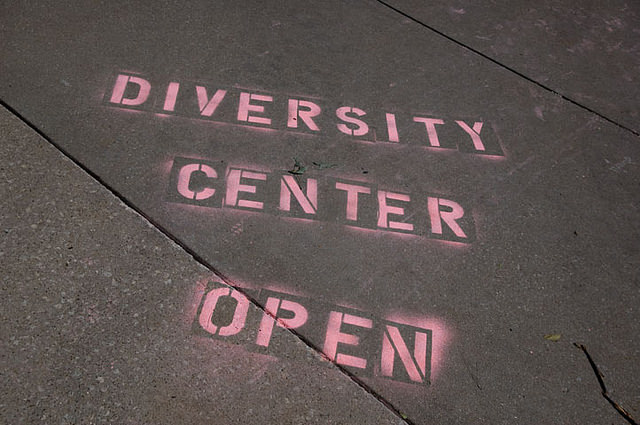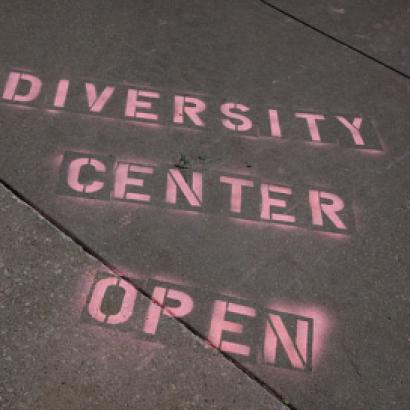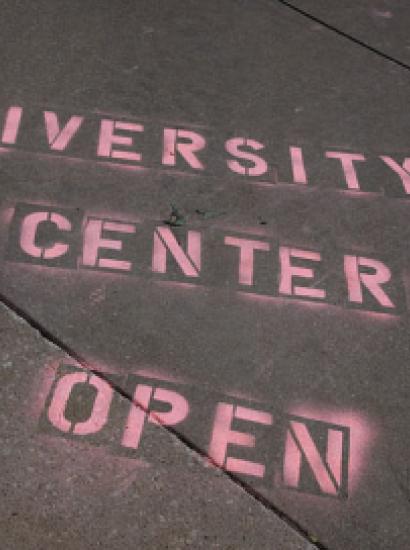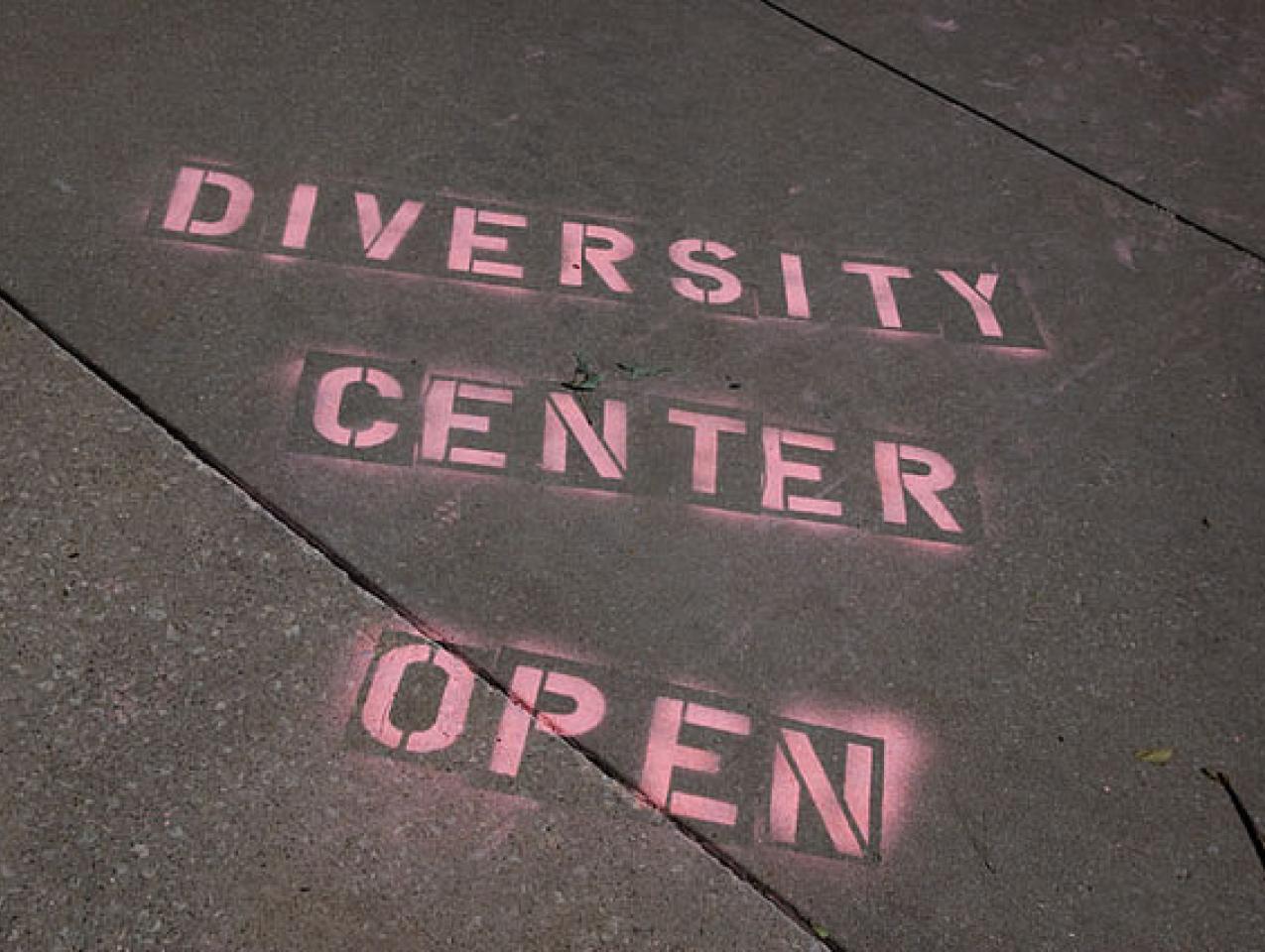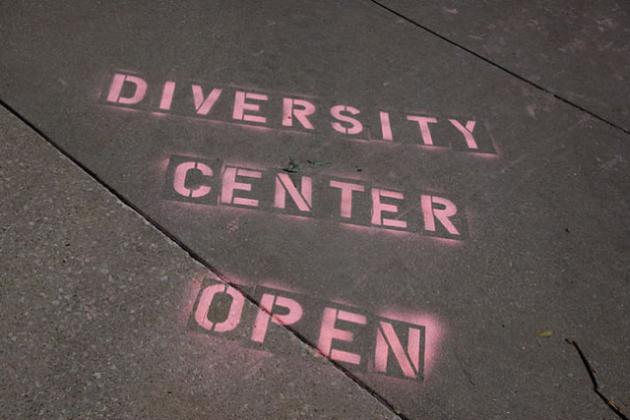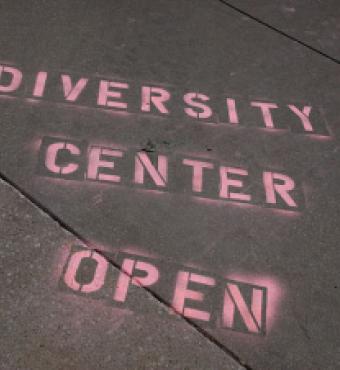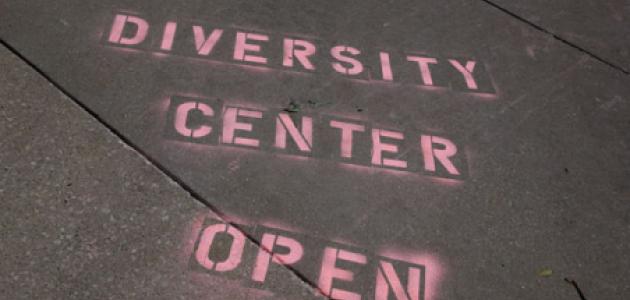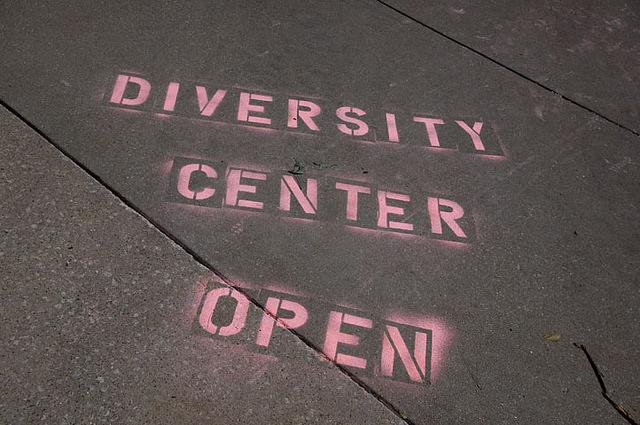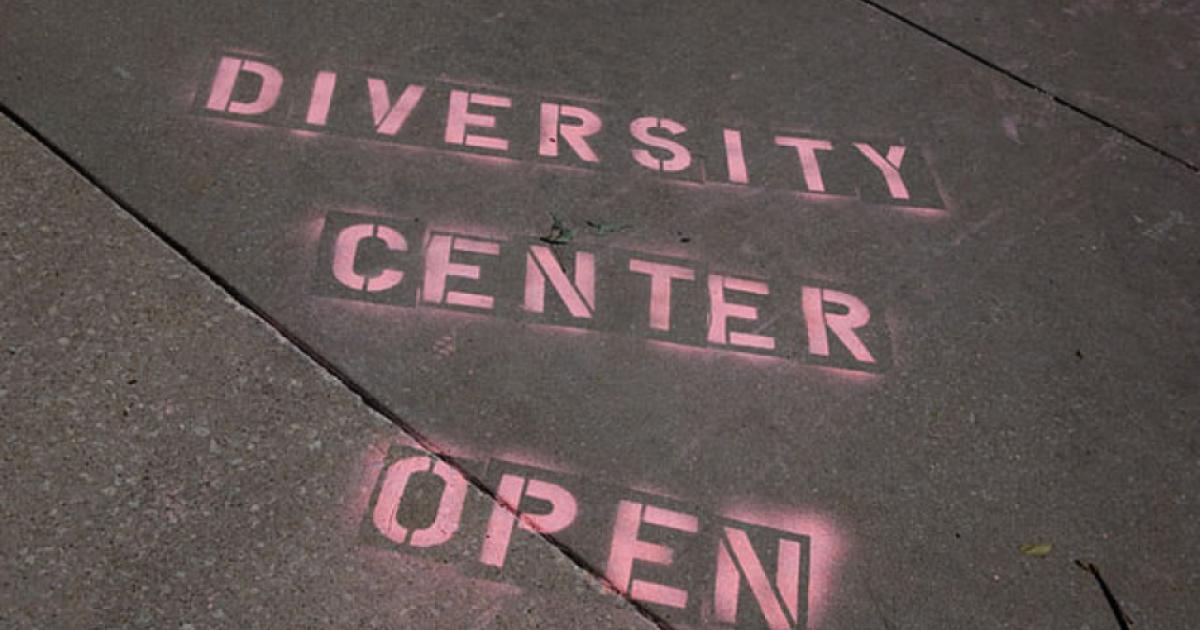Like the 1812 earthquake that rumbled from its epicenter at New Madrid, Missouri, to New England, Georgia and other distant locations, this fall’s protests at the University of Missouri spread to colleges in every corner of the country.
At Harvard, a group of law students launched a campaign to remove the school’s seal because it contains the coat of arms of a slave owner. At Dartmouth, students and faculty marched in solidarity with black students at the University of Missouri in what was called a “black out” (the marchers all wore black). After days of protests at Yale, the university president announced plans for more academic study of race and ethnicity and for improvements in the experiences of people of color. At Princeton a debate inspired by objections to the university’s use of the name of former university president (and president of the United States) Woodrow Wilson is ongoing. Everywhere, university administrators are scrambling to assure their students of color that their schools really do care.
In response to the continuing protests, much has been written and spoken about how universities can best serve the interests of their students of color. Those who sympathize with the protesters argue that students of color, in particular, should be nurtured and protected from uncomfortable experiences that distract from their education. Others insist that true education depends on students experiencing discomfort so they are better prepared to cope with the discomforts they will inevitably face in the future. No doubt there are good points to be considered on both sides of the question. Every campus has its boors and jerks whose bad behaviors might warrant chastisement from university officials, although peer disapproval is almost always a more effective remedy.
Whether and when offensive speech should be prohibited are more difficult questions. The boundary between gratuitous verbal assault and the free expression essential to the academy is not always easily drawn, although a few institutions have followed the example of the University of Chicago in making clear that their default position is free speech.
Sadly, Americans seem to lose any capacity for reasoned discussion when alleged personal assaults are said to stem from racial animus. Disagreements deteriorate into verbal and often physical violence, with an almost conclusive presumption of racism whenever racism is alleged. In this climate, college administrators see only two options. They can resign, as did the University of Missouri president and the dean of students at Claremont McKenna (after writing an email to which students of color took offense). Or they can accede to protesters’ demands for safe spaces, sensitivity training, trigger warnings, expanded diversity offices, and rapid response to allegations of discrimination and hurt.
But there is a third way. Colleges and universities should examine how their own policies and programs encourage racial division.
At the time of the University of Missouri protests, a story in the New York Times reported that students of color at the university felt isolated and disrespected. They, particularly the black students, tend to hang out together. According to a student quoted in the Times story, an area in the student center where blacks sit is called “the black hole.” There is little real integration, say both white and black students. Visit the cafeteria of almost any campus with even a small population of black students and you will see the equivalent of the University of Missouri’s black hole.
Do students of color hang out together because they feel disrespected and discriminated against—because they are excluded? Or is it a matter of choice rooted in racial pride, perceived cultural difference, and a desire to preserve and protect that difference from the dominant white culture? While the protesters would surely assert their right to racial self-segregation for reasons of pride, solidarity and culture, they do not hesitate to claim that disrespect and discrimination by other students and school officials prevent their full and equal participation in the university. To be clear, no one is claiming that students of color are being denied access to higher education—the sort of discrimination James Meredith experienced a half century ago at the University of Mississippi. Rather, today’s discrimination is said to take the form of “micro-aggressions”—subtle actions and loaded language that slowly eat away at self-confidence and the sense of belonging.
Are colleges and universities responsible for the isolation and exclusion the protesters claim to experience, and for the de facto segregation that exists on most campuses? In significant ways they are, but not, for the most part, for the reasons said to justify the protests at the University of Missouri and elsewhere. There is little campus administrators can do, beyond declarations of disapproval, to prevent offensive comments, or even explicitly racist statements and actions of usually anonymous individuals. If the past two decades of sensitivity training haven’t solved that problem, there is little reason to think more of the same will help.
The core of the problem is that the vast majority of our colleges and universities have made race and racial differences central to almost everything they do. And to make matters worse, those who accredit our universities make attention to race in admissions and programming a condition of accreditation.
Central to the mission of the University of Missouri is diversity, described on the school’s website as “not an end to itself” but “a means for students, faculty and staff to experience firsthand the increasing multicultural world that we live in.” And what are the means for achieving diversity and the measure of success? The means is the admissions process and the measure of success is the degree to which the races of those admitted reflect the racial makeup of the state and nation. Whatever the university may claim to the contrary, race is a key factor in admissions, as it is at almost every other college and university in the country.
Once the racially balanced student body arrives at the University of Missouri, minority students have a wide array of options provided especially for them. For example, black students can enroll in black studies with a minor in multicultural studies. They can apply for many different “diversity-related scholarships.” They can join one of seven “historically black fraternities or sororities.” They can hang out at the Black Culture Center and join the African Students Association, the Mizzou Black Men’s Initiative, the Mizzou Black Women’s Initiative, the Association of Black Graduate and Professional Students, the Legion of Black Collegians, the Black Business Students Association and the Black Law Students Association, just to name a few. Meanwhile their fellow white students can enroll in any number of diversity and sensitivity training courses all under the watchful eye of the vice-chancellor for inclusion.
Can there be any surprise that students of color feel as if they are treated differently from white students when their admission to the university is very likely to have been influenced by their race? When they, and only they, are often invited to campus a week early, purportedly to bond with their fellow students of color and to give them a head start on college? When one of their first experiences on campus is some sort of gathering with other students of color? When they are directed to the campus office of diversity or minority affairs as a place for counseling? When they are invited to join the Black or Hispanic or Pacific Islander or Native Hawaiian student union? When they learn they can major in Black, etc. studies?
No factor, not even athletic prowess, is more significant to college admissions than race. Diversity is a core mission for the vast majority of institutions and students of color know that means them. Students of color know themselves to be what we now call, in a terrible corruption of the language, “diverse” individuals. Special programming for minority students cannot help but convey, in a micro-aggression-like manner, that campus officials believe students of color need extra help to succeed. School sanctioned programs and groups that cater to students of color, even students of particular colors, segregate students on the basis of race. Separate minority counseling services reinforce the idea that students of color are different, that counselors of a different race cannot possibly understand a minority student’s issues and concerns. Some universities even provide separate (dare one say segregated) housing for students of particular races.
All of this focus on race cannot help but influence the thinking of white students. Even before going to college, most white students have been taught in secondary and even primary school that minority kids are different and that as white students they need to be sensitive to those differences. When they apply to colleges, white students know that they have a disadvantage in the admissions process. Once they arrive on campus, they witness university-sponsored and endorsed programming directed at students of color. Now they are learning that they need to shelve their “white privilege,” notwithstanding that many of their minority classmates may have come from economic or family circumstances far better than theirs.
Whatever privilege students may have before they arrive at college, the reality of American higher education today is that students of color have been privileged by their institutions in ways that invite segregation and differential treatment, whether done in the name of reparations for past discrimination, as affirmative action to overcome societally imposed disadvantages, or in the belief that celebrating and encouraging differences improves education for everyone. There should be no surprise that students of color often self-segregate and are seen as different by their fellow students.
The concept of white privilege is a logical outgrowth of the concept of institutional racism. In reaction to the now quaint notion that intent to discriminate must be proven to establish illegal race discrimination, lawyers and race scholars came up with the concept of institutional racism. The idea is that racism is so deeply rooted in American society that it persists even amongst institutions that have made genuine efforts to correct for any intentional past discrimination. Thus, the theory holds, the University of Missouri and all of its privileged white students are guilty, by definition, of racial discrimination today, albeit in subtle ways.
But there is nothing subtle about the most pervasive form of racial discrimination prevailing at most American colleges and universities today. It is done in the name of lifting up those who have been discriminated against in the past. But there should be little wonder that the intended beneficiaries of this allegedly benign discrimination feel themselves isolated and treated differently. By design, universities have isolated them and treated them differently.







